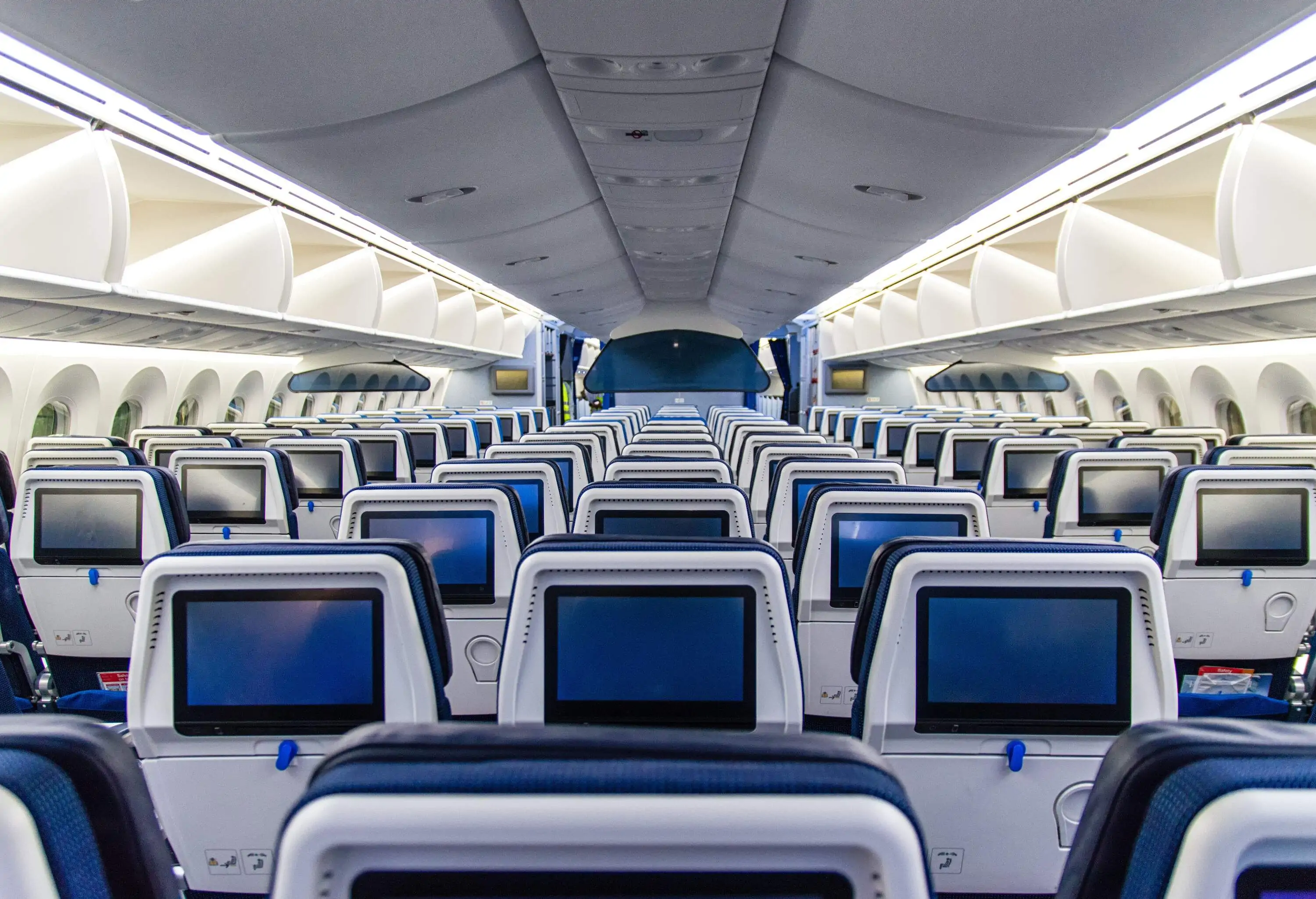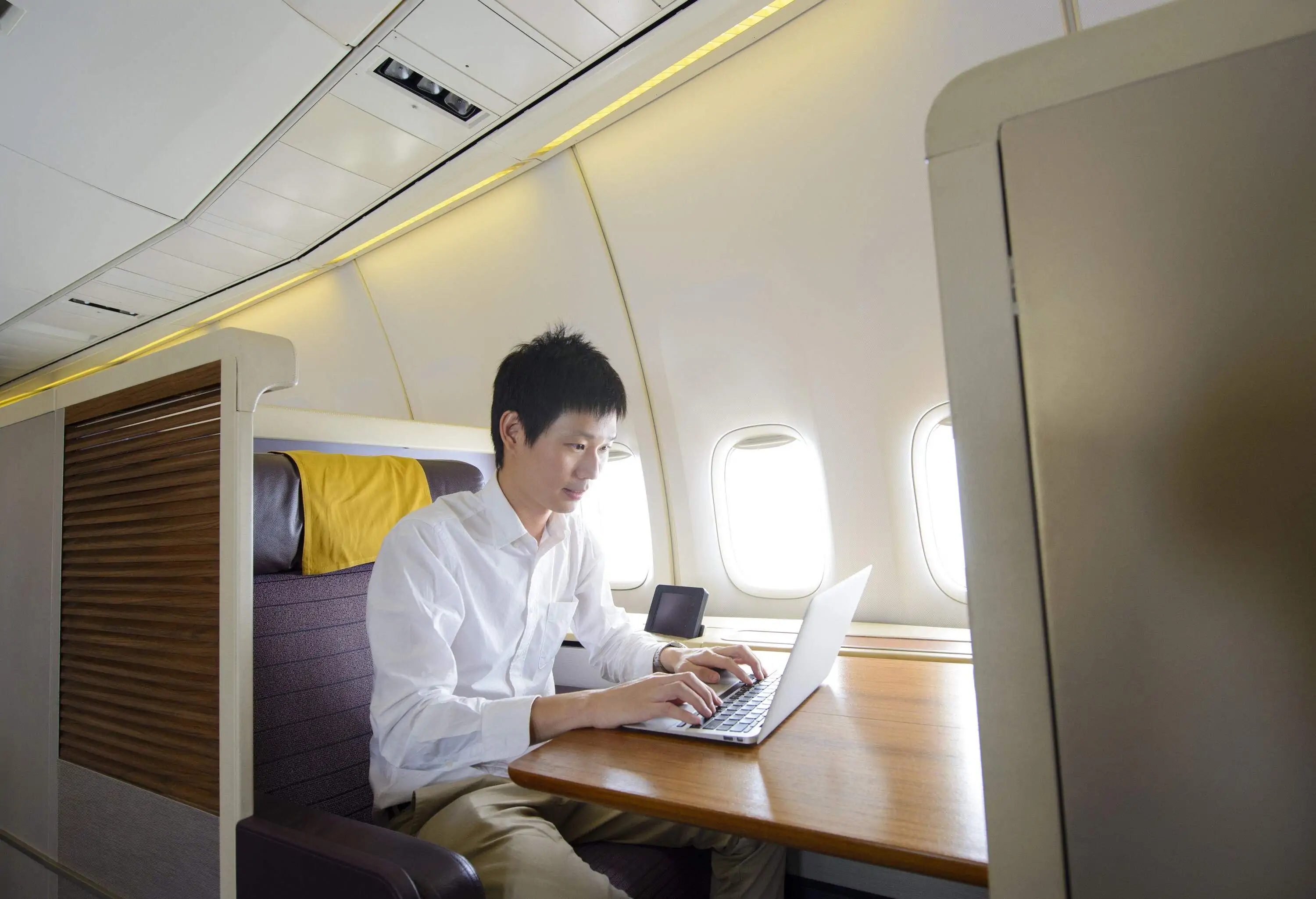Editor’s note: As of July 20, 2017, the U.S. has lifted the ban on laptops and large electronics on U.S. bound flights on all airlines and from all airports listed below. We do our best to bring you the most timely information, but things change quickly these days. Please always double check current policies with your airline or agent before you book.
Talks of a ban on laptops and other electronics in plane cabins have been circulating throughout the media recently, leaving many travelers questioning what a so-called “laptop ban” might mean for them. To help address this question, we’ve compiled some of the current information on changes to in-flight electronics rules and regulation, along with a few tips on how to keep your possessions safe when they’re checked in the hold, and how to keep yourself (and others) occupied when a screen isn’t an option. So read on to keep yourself informed and when you’re ready to continue your flight search, Cheapflights.com can help with that, too.
Which countries are affected currently affected by electronics bans?
Currently, electronics bans are only affecting nonstop flights bound for the United Kingdom originating from certain locations in the Middle East and northern Africa. Electronics bans issued for United States-bound flights from 10 Middle Eastern airports on nine airlines in March 2017 have been lifted as of July 2017.
United States: Beginning in March 2017 and ending in July 2017, nonstop flights on nine airlines bound for the U.S. from 10 airports were subject to in-flight electronics restrictions. The restrictions stipulated that electronics larger than a phone – laptops, tablets, e-readers, cameras – that are powered by lithium-ion batteries must be stored in checked luggage rather than carried on. Those airlines that had been affected were:
- Royal Jordanian Airlines
- EgyptAir
- Turkish Airlines
- Saudia
- Kuwait Airways
- Royal Air Maroc
- Qatar Airways
- Etihad
- Emirates
The 10 Middle Eastern and African airports that had been affected were:
- Queen Alia International Airport (AMM) in Amman, Jordan
- Abu Dhabi International Airport(AUH) in Abu Dhabi U.A.E.
- Cairo International Airport (CAI) in Cairo, Egypt
- Mohammed V Airport (CMN) in Casablanca, Morocco
- Hamad International Airport (DOH) in Doha, Qatar
- Dubai International Airport (DXB) in Dubai, U.A.E.
- Ataturk International Aiport (IST) in Istanbul, Turkey
- King Abdulaziz International Airport (JED) in Jeddah, Saudi Arabia
- Kuwait International Airport (KWI) near Kuwait City, Kuwait
- King Khalid International Airport (RUH) in Riyadh, Saudi Arabia
United Kingdom: Since March 2017, nonstop flights on all airlines bound for the U.K. from the following six countries – Turkey, Lebanon, Egypt, Saudi Arabia, Jordan, Tunisia – have been subject to in-flight electronics restrictions. The restrictions state that phones, laptops, tablets and electronics accessories – such as keyboards, power supplies and external hard drives – must be smaller than 16 c.m. x 9.3 c.m. X 1.5 c.m. Most popular smartphones fit within those limits.
Tips to keep your electronics safe in checked luggage
It’s impossible to guarantee the safety of any item checked in an aircraft hold. Accidents can happen. These few simple steps may go some way to mitigating the risks, but the best deterrent is simply – if you can manage without it – leave the screen at home.
- Pack electronics in a protective case.
- Wrap items in a towel/clothing, then pack in the center of the suitcase ensuring there is clothing below, above and to the sides of the items to provide extra padding. Wrap each electronic separately, not in one pile.
- Lock your luggage to reduce the chances of items going missing, but only use a TSA-approved lock to secure your suitcase.
- Check your insurance policy for its coverage of electronic items stored in checked luggage.
- Pack efficiently by not taking items you won’t really need or will attract attention to your suitcase. Also consider buying toiletries once at your destination to reduce the chance of liquids leaking into your electronics.
Top tips for traveling long-haul, device-free
While these new restrictions are a bit of an inconvenience, these handy tips will help you make the most of your newly screen-free travel experience:
- Expect confusion and delays – Arrive at the airport at least three hours before departure. It is possible that there will be delays from confused passengers whose bags might need to be repacked at check-in or while bags are screened at security.
- Look forward to the in-flight entertainment – Check your flight’s in-flight entertainment options before travelling, to see the latest movies, TV shows, radio shows and exclusive content available during the journey.
- Time to relax – Give yourself enough time before your flight to get to the airport, get through security and find your gate without creating too much stress for yourself. Grab a calming drink – be it a tea or a cocktail – get into a book or maybe enjoy a pre-flight chair massage and indulge in the forced time away from your screens.
- Help yourself catch some zzz’s – Get some much-needed sleep and stay hydrated to help fight off jet lag. Invest in a decent travel pillow, eye mask and noise cancelling headphones, and buy extra water.
- Book Club – Rediscover the joy of reading a book, from an old favorite to a new author, lose yourself in the pages and the hours will slip passed.
- If you’re still puzzled – Flex your brain with a puzzle book. Crosswords and Sudoku are perfect for stimulating your brain and using your hands whilst on a long flight
- Power up your phone – Upload apps and content onto your mobile phone that can be viewed, played or read while in flight safe mode.
- Business travel with brains – Business travelers should consider buying access to an airport lounge to use the lounge’s computers before they fly or during a stopover. Carry work files on a USB to use at the lounge and in case of delayed or lost baggage, especially if these files are crucial shortly after arrival at your destination.
Top tips for traveling device-free with children
We all know how helpful screens can be in keeping kids in order during a long and tiring flight – giving both them and their parents a bit of a break. Here’s how to achieve the same effect without hours of games, apps or movies to fall back on:
- Color in – These days, coloring books are just as much for adults as kids. If you’ve got teens, pack something like Lonely Planet’s Ultimate Travel Coloring Book and you may well be fighting over it. If you’ve got toddlers and you’re worried about them getting pen everywhere, have a look at Crayola Color Wonder books. They come with pens, so you don’t have to remember to pack them, and they’re specially designed to only work on the pages of the book.
- Give them your iPod – Still own an iPod? Got a teenager or pre-teen? Let them fill it with audiobooks, download some podcasts and create their own soundtrack of vacation-ready songs before the trip. Then invest in some decent earphones designed for young ears and enjoy the peace and quiet.
- Bring an activity book – Lonely Planet does a great range of books where every page is packed with interactive things to do, so it’ll be a decent amount of time before anyone says they’re bored. Try the Adventures In series for pre-schoolers, Spot The Lot for kids aged five and up, and the Not For Parents range for older kids and pre-teens. They’re all travel-themed, naturally.
- Play travel games – Loads of classic games come in travel-friendly sizes. Pack a mini Guess Who? for younger kids or Uno cards if your children are a bit older and you can play them on holiday, too. Regular old playing cards can be great in-flight entertainment, too. Even if each game only takes five minutes, that’s more than four hours of your journey covered
- Design a postcard – Put them to work before your trip, and get them making postcards to can send from their holiday. Take a blank pack and some pens, or buy a postcard book – there are plenty to choose from online. It works especially well for younger kids, who can help buy stamps and find a postbox to send them from once you arrive at your destination.
- Read a book – Go old-school and pack an actual made-of-paper book for your pre-teen. Choose something travel-themed, or just go for something you’d be happy to read, too, and you’ll save space in your hand luggage.
What are your go-to, screen-free ways for making it through a flight? Let us know in the comments below.





